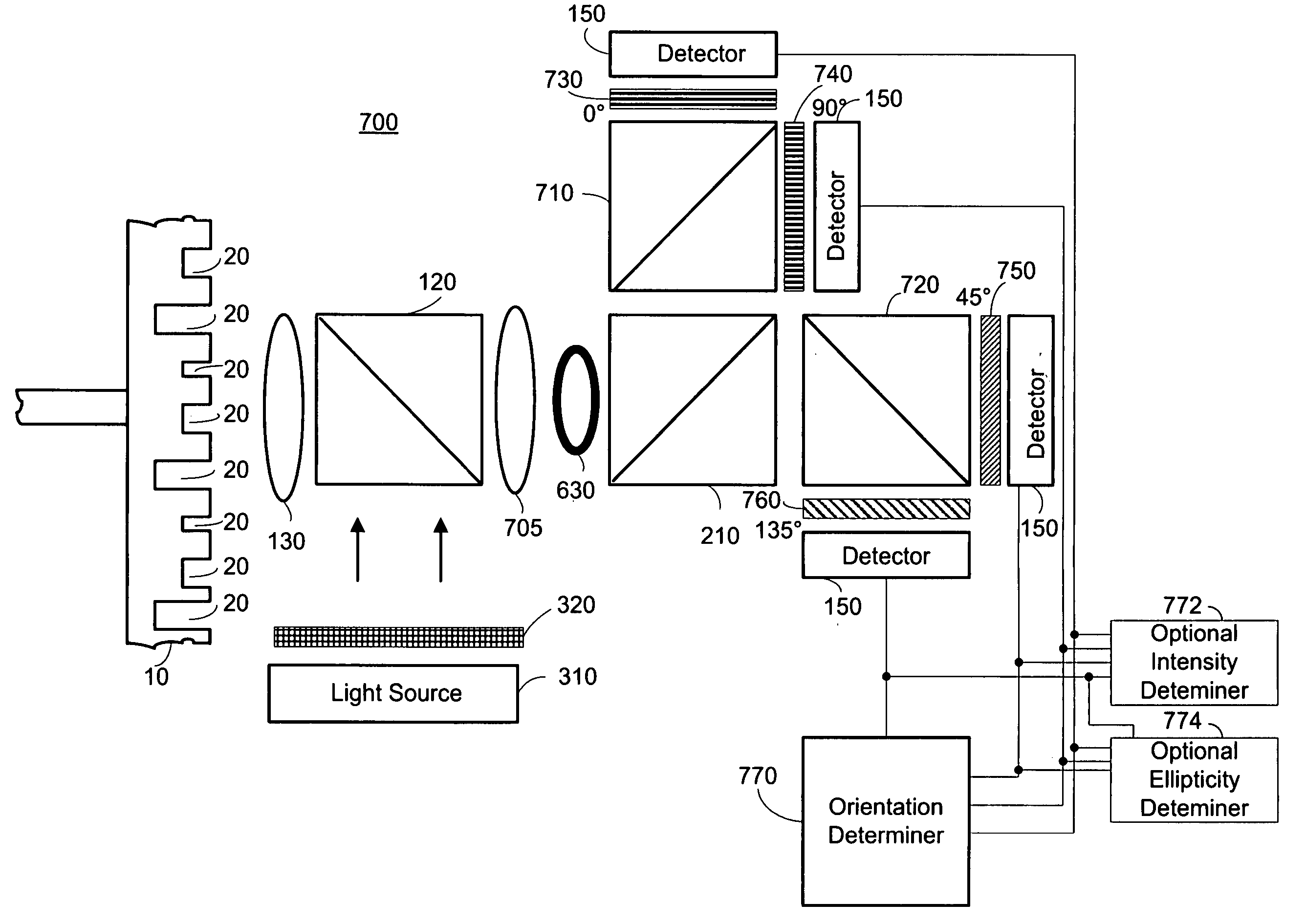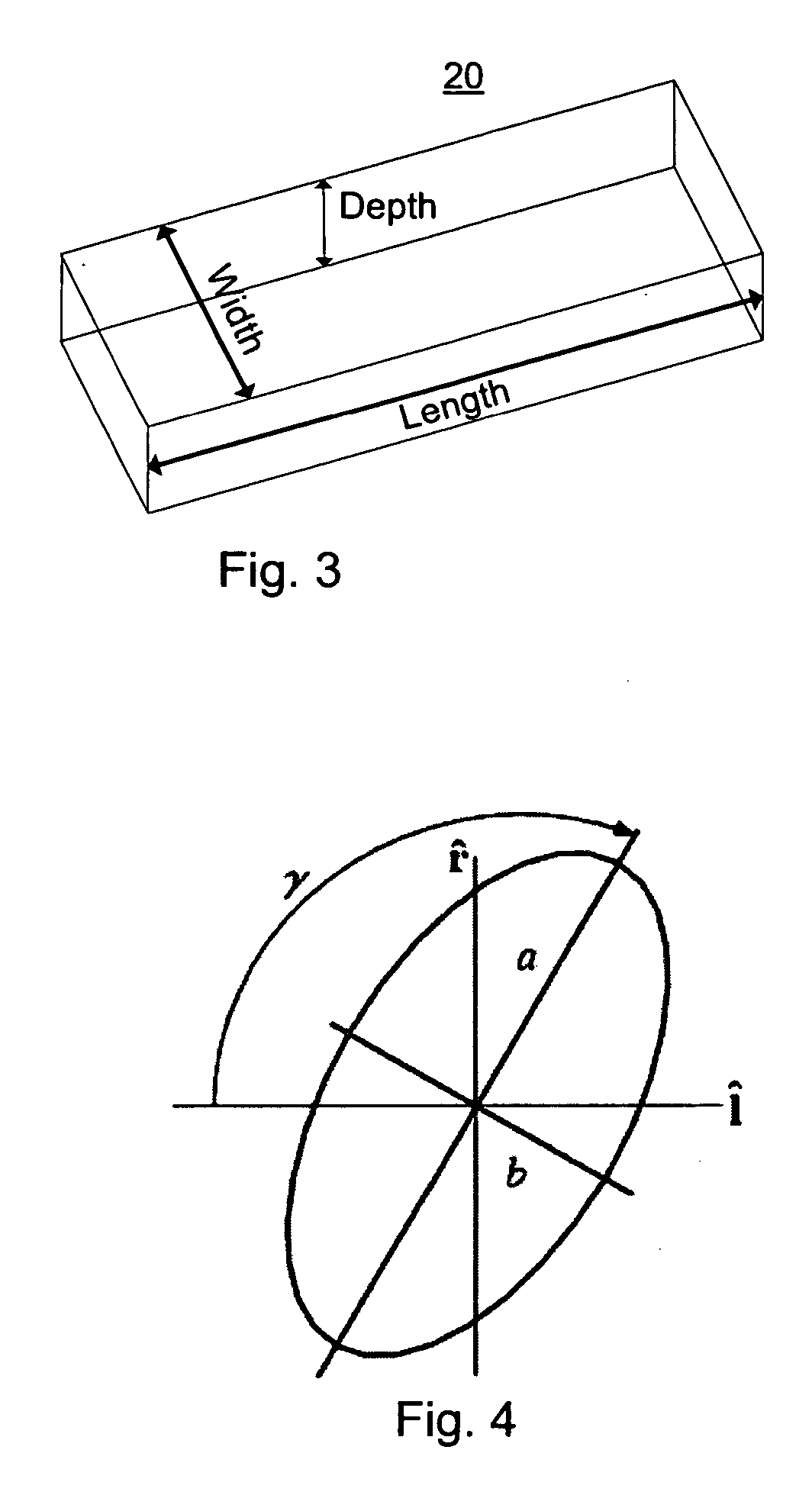Method and system for encoding and detecting optical information
a technology of optical information and optical data, applied in the field of optical data storage, can solve the problems of limiting the amount of data storage that can be supplied in a given data media, negatively affecting the ultimate data reading rate, and ultimately limited data storag
- Summary
- Abstract
- Description
- Claims
- Application Information
AI Technical Summary
Benefits of technology
Problems solved by technology
Method used
Image
Examples
Embodiment Construction
[0053] The present embodiments enable encoding data in an optical memory by planar orientation of marks, such as pits or bumps. The marks are sized to be of sub-wavelength width, with a length comparable to, or larger than, the wavelength. The operative wavelength is hereinafter denoted by λ. The depth or height of the mark is preferably λ / 4, however other depth or heights may be used without exceeding the scope of the invention. A polarized light source is used to read the mark, typically by one of reflection and transmission. Collected light exhibits an elliptic anisotropy, with the principle axis of the ellipse corresponding to the planar orientation of the mark. The collected light is detected by a plurality of polarization sensitive detectors, the intensity and polarization pattern of the collected light indicating the direction of the axis of the ellipse. Thus, the varying planar orientation of the mark encodes the data.
[0054] The specific relationship between the pit mark or...
PUM
| Property | Measurement | Unit |
|---|---|---|
| angles | aaaaa | aaaaa |
| θ | aaaaa | aaaaa |
| polarization angles | aaaaa | aaaaa |
Abstract
Description
Claims
Application Information
 Login to View More
Login to View More - R&D
- Intellectual Property
- Life Sciences
- Materials
- Tech Scout
- Unparalleled Data Quality
- Higher Quality Content
- 60% Fewer Hallucinations
Browse by: Latest US Patents, China's latest patents, Technical Efficacy Thesaurus, Application Domain, Technology Topic, Popular Technical Reports.
© 2025 PatSnap. All rights reserved.Legal|Privacy policy|Modern Slavery Act Transparency Statement|Sitemap|About US| Contact US: help@patsnap.com



